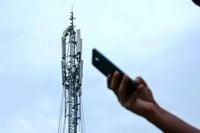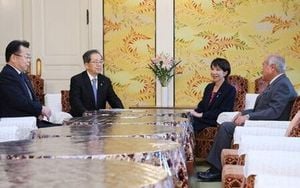In a dramatic escalation of digital censorship, Afghanistan’s Taliban government has imposed sweeping internet restrictions, plunging millions into an information blackout and sparking urgent warnings from global rights advocates. Over the past several weeks, the Taliban has not only orchestrated a 48-hour nationwide internet shutdown, but also blocked access to major social media platforms such as Facebook, Instagram, and Snapchat across numerous provinces. The crackdown, which began in mid-September and intensified in early October, has drawn sharp comparisons to China’s notorious “Great Firewall” and ignited debate over the future of digital freedoms in the region.
According to AFP, the initial internet blackout lasted 48 hours and was followed by ongoing restrictions on several popular social platforms. Residents in Kabul, Parwan, Balkh, Samangan, and Faryab reported that they could only access social media through virtual private networks (VPNs), while Snapchat remained completely inaccessible. The blackout, which first took hold in Balkh province on September 15, quickly spread to Kandahar, Uruzgan, Helmand, Nimroz, Baghlan, Ghazni, Parwan, Nangarhar, and Herat, with sources inside the Taliban confirming that the order came directly from the group’s reclusive leader, Hibatullah Akhundzada.
Despite mounting internal opposition, Taliban officials pressed ahead with the shutdown, and reports from Kandahar suggest that the fiber-optic internet cut there may be permanent. The Associated Press noted that the Taliban has not publicly explained the rationale behind these sweeping restrictions, nor has it responded to requests for comment from journalists or international organizations.
While the Taliban has blamed the initial blackout on worn-out fiber-optic cables, this explanation has been met with widespread skepticism, especially given the timing of the shutdown. As reported by multiple outlets, the 48-hour blackout coincided with a new “morality campaign” ordered by Akhundzada, which UN experts believe is part of a broader strategy to control public discourse and regulate societal conduct. The same experts highlighted that these new restrictions, although more targeted than blanket bans, represent a significant escalation in the Taliban’s efforts to shape the digital landscape.
The Taliban’s methods have drawn inevitable comparisons to China’s Golden Shield Project, commonly known as the Great Firewall. Since the late 1990s, China has built an extensive system of online censorship, blocking access to Google, Facebook, Instagram, and foreign news outlets such as the BBC. As Shahzeb Mahmood, head of research at Tech Global Institute, told AFP, the primary goal of such systems is to “preserve political control, social stability, informational control, [and] ideological conformity.” In China, domestic platforms like WeChat and Baidu have flourished in the vacuum left by foreign competitors, while lifestyle app Xiaohongshu (RedNote) has become a popular alternative to Instagram.
In Afghanistan, the Taliban’s restrictions appear to serve similar ends. Mahmood suggested that the group may be motivated by a desire to prevent the spread of pornography, restrict women’s access to education, and limit exposure to Western content on social media. He noted, “You can almost say it’s a playbook that is being replicated in multiple jurisdictions, basically because it has worked in certain contexts.”
The Taliban’s actions have not gone unnoticed by the international community. On October 10, 2025, UN experts issued a scathing statement warning that the restrictions on internet, mobile phone services, and social media platforms constitute a breach of Afghans’ fundamental rights. They called on the Taliban to “immediately reinstate full access and refrain from further violations of civil, political, economic, social and cultural rights.” The experts emphasized that shutdowns and platform bans impede freedom of expression and access to information, severing Afghans from the global community and family members abroad who provide critical support through remittances.
The economic consequences are also severe. As highlighted by the UN, internet disruptions undermine commerce, deepen unemployment, and exacerbate poverty in a country already facing a fragile economic outlook. The impact is particularly acute for women and girls, who often rely on online spaces for education, work, and business. The experts warned that “a deterioration in women and girls’ mental health is a likely further impact,” underscoring the far-reaching social costs of digital repression.
Interestingly, the Taliban’s approach to digital censorship is not as technologically sophisticated as China’s, according to AFP. While China’s firewall can be circumvented by VPNs and certain mobile eSIMs, their use remains limited to a relatively small, urban, and educated segment of the population. Kendra Schaefer, a tech partner at Trivium China, explained, “If you are a college-educated young person, and you live in a major urban area, you probably have access to a VPN, but most people don’t.” In Afghanistan, residents in affected provinces have similarly turned to VPNs in an effort to bypass the Taliban’s restrictions, but such workarounds are far from universal.
The Taliban’s clampdown comes just a year after the group touted Afghanistan’s 9,350-kilometer fiber-optic network—largely built by previous US-backed governments—as a “priority” for national development. Now, the same infrastructure has become a tool for digital isolation. As the Associated Press reported, the Taliban initially denied imposing a nationwide ban, instead attributing the blackout to technical issues. However, the group later confirmed that it had deliberately cut fiber-optic services in several provinces, without offering any explanation for the two-day interruption.
For many Afghans, the consequences of these restrictions are deeply personal. The sudden loss of access to social media has cut off vital channels for communication, self-expression, and economic opportunity. The UN experts warned that the shutdowns “cut off Afghans from the global community and from family members abroad who provide critical support through remittances.” Meanwhile, the Taliban’s silence on the issue has only fueled uncertainty and anxiety among the population.
Other Asian countries, including Vietnam, Myanmar, Pakistan, and India, have also implemented varying degrees of internet control, but the scope and technical sophistication of these efforts differ widely. In Afghanistan, the Taliban’s restrictions are seen by some as an attempt to replicate successful models of digital censorship, despite the unique challenges posed by the country’s geography, demographics, and infrastructure.
As the blackout drags on and access to information remains tightly controlled, the international community continues to press for answers and accountability. The UN’s call for the immediate reinstatement of full internet access has yet to be heeded, and the Taliban’s refusal to explain its actions leaves Afghans—and the world—wondering what comes next. For now, the digital darkness imposed by the Taliban stands as a stark reminder of the power of information, and the lengths to which some regimes will go to keep it in check.






